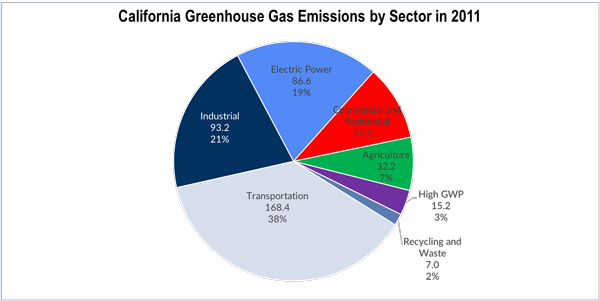By Jason Fordney and Robert Mullin
California’s landmark program to combat climate change has received a new lease on life — 10 years, to be exact.
Both houses of the California State Legislature voted late Monday to extend the state’s greenhouse gas (GHG) cap-and-trade program until 2030 (AB-398). The bill now advances to the desk of Gov. Jerry Brown, a key supporter of the legislation.
“Tonight, California stood tall and, once again, boldly confronted the existential threat of our time,” Brown said in a statement. “Republicans and Democrats set aside their differences, came together and took courageous action. That’s what good government looks like.”
The outcome is a major victory in Brown’s efforts to ensure that California remains at the forefront of global environmental policy despite President Trump’s moves to roll back the previous administration’s measures to reduce carbon emissions.
Even better for Brown: Both the Senate and Assembly passed the legislation with more than two-thirds of members voting in favor. That margin should protect the bill from challengers who have argued that cap-and-trade constitutes a tax that requires supermajority approval under state law.
The state’s Supreme Court recently declined to review a court challenge by business groups. (See California High Court Upholds Cap-and-Trade.)
The cap-and-trade extension passed the state Senate 28-12, a single vote above the threshold needed to obtain a supermajority. Just one Republican — Sen. Tom Berryhill of Modesto — crossed the aisle to join Democrats who voted unanimously in favor of the measure. Assemblymembers voted 55-21 in favor, with seven Republicans and all but six Democrats — three no votes, two abstentions and one absence — in support.
The bill also mandates that large industrial facilities such as oil refineries upgrade emissions equipment by December 2023, and it increases penalties for pollution. It also requires emission reductions from mobile and stationary sources.
“Californians overwhelmingly support our efforts to tackle climate change; they know it’s an urgent threat and they want us to continue to lead. That’s exactly what we’re doing by extending cap-and-trade,” Senate President pro Tempore Kevin de Leòn said.
The cap-and-trade program will help the state meet its goal of reducing GHG emissions to 40% below 1990 levels by 2030, Brown’s office said last week in drumming up support for the bill.
The measure “extends the program by 10 years in the most cost-effective way possible,” according to Brown. It will ensure that carbon pollution decreases as the emissions cap declines and use of out-of-state carbon offsets is reduced; free carbon allowances will be reduced by more than 40% by 2030, he said.
Lawmakers on Monday also passed AB-617, a bill that provides for neighborhood air monitoring — an attempt to placate environmental justice groups that have been skeptical of cap-and-trade because it doesn’t directly address local pollution in low-income areas.
“The passage of AB-398 and AB-617 builds upon the momentum set forth by last year’s landmark climate change polices; establishing a comprehensive, statewide program that will allow us to achieve our ambitious climate goals, while ensuring the market stability necessary to retain industry jobs and address vital public health and air quality issues,” said Assembly member Eduardo Garcia, a sponsor of both bills.
The legislative package was “the product of weeks of discussions between the administration and legislative leaders with Republican and Democratic legislators, environmental justice advocates, environmental groups, utilities, industry and labor representatives, economists, agricultural and business organizations, faith leaders and local government officials,” Brown’s office said.
Under the cap-and-trade program, large GHG emitters must purchase emissions credits at the California Air Resource Board’s quarterly auctions to cover emissions not accounted for with free credits. Extending the program will keep auction proceeds flowing to environmental initiatives around the state, the governor’s office said.
“To date, these investments have preserved and restored tens of thousands of acres of open space, helped plant thousands of new trees, funded 30,000 energy-efficiency improvements in homes, expanded affordable housing, boosted public transit and helped over 100,000 Californians purchase zero-emission vehicles,” the office said.
Brown said he will continue to pursue climate change policies despite Trump’s pledge to withdraw from the Paris Agreement on climate change, which the president says is unfair to the U.S. Brown recently announced that California will host global leaders in September 2018 for a Global Climate Action Summit to support the agreement.
Brown last week also announced the “America’s Pledge” program with businessman and former New York City Mayor Michael Bloomberg. The governor’s office described the program as “a new initiative to compile and quantify the actions of states, cities and businesses in the United States to drive down their greenhouse gas emissions consistent with the goals of the Paris Agreement.” The initiative will produce a report on aggregate climate change commitments by states, cities, business and educational institutions, and a “roadmap for future climate change ambition.”
(See related story California Zero-Carbon Power Bill Advances.)




